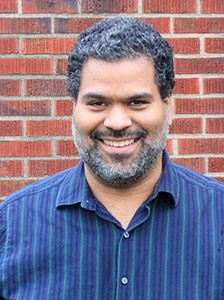As a first-year student at Brown University, twenty-five years ago, I was detained by campus security for trespassing. In my own dorm. In sock feet.
You see, I’d left my room to go to the bathroom and didn’t bring my college ID along. I guess I should have known better. As a black student it was always an unstated expectation that I justify my presence on campus. Black students were a small minority on campus and we were often seen as interlopers, even after admission.
I was reminded of this incident during the past weeks as protests escalated at the University of Missouri (Mizzou) over a string of racist incidents there, culminating in the ouster of the state university System President Tim Wolfe. Inspired by the Black Lives Matter movement and using a wide range of tried-and-true and cutting edge tactics, Mizzou students won one of their main demands, something many observers had said was impossible.
This example of the power of protest was met with rightwing media ridicule, attack by the Missouri Lt. Governor and even death threats against students. Just a day after the jubilation at the resignation of Wolfe, fear of violence turned the campus into a ghost town.
Many white students, professors, community supporters and even the head of the country’s trade union movement all came out in support of the students. The hashtag #BlackOnCampus began documenting student experiences with racism around the country.
Missouri students were not alone. Students at Yale University were in motion as well in response to a racist incident on campus and reports of a “white girls only” fraternity party.
More joined the fight on Nov. 12, when the already planned Million Student March – demanding the elimination of all student debt (which has reached $1.2 trillion nationally), free college education for all, and $15 minimum wage for campus workers – stood in solidarity with besieged Mizzou students.
Racism on campuses both private and public is nothing new. Neither is student protest around the issues affecting their lives.
What is new is the national scope of the protest and the breadth of the support. Some 115 campuses took part in the protests. More than 1,000 students gathered at the University of California at Berkeley. It’s the kind of student action not seen in a generation.
Ultimately the protests at Mizzou and elsewhere are not so much about this administrator or that, as they are about demanding that institutions of higher learning create a space for students of color. It’s the same issue we were struggling with years ago.
When I was detained as a student it was not an isolated incident. Police harassment of black students in particular was commonplace. There were also acts of bigotry against students of color by a few white students, reminders that to some we were unwelcome.
So it was no accident then that graduation rates for black students lagged behind those of our peers. So we organized meetings, issued demands, and protested to make a change, just like students today. Unfortunately little has changed. Black enrollment and graduation rates at Mizzou and colleges around the country are disproportionately low.
Some commentators seem to think these students are protesting because they are young and naive or involved in an intellectual exercise. But students today – as always – are largely motivated to action by the pressing issues impacting their lives and educations. They are fighting to learn and survive. It’s not academic.





